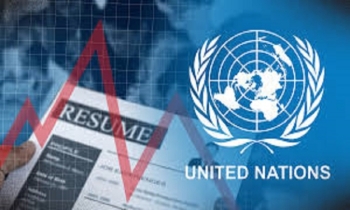Sub-Saharan Africa’s Difficult Road to Recovery
Abebe Aemro Selassie, IMFBlog || BusinessInsider

The COVID-19 pandemic represents an unprecedented health and economic crisis for sub-Saharan Africa. Within months, the spread of the virus has jeopardized years of development and decades-long gains against poverty in the region while threatening the lives and livelihoods of millions of people.
In our latest Regional Economic Outlook, we project -3 percent growth in sub-Saharan Africa’s GDP in 2020, representing the worst outcome on record for the region. The drop will be even larger for economies dependent on tourism and commodity exports. Growth in the region should rebound modestly in 2021 to 3.1 percent, but for many countries, a return to 2019 levels won’t occur until 2022–24.
Countries in the region acted swiftly to protect their people from the worst of the crisis, but lockdown measures came with high economic and social costs. Policymakers in sub-Saharan Africa now face the added challenge of rekindling their economies with fewer resources and more difficult choices.
As the region looks toward the future, uncertainty over the path of the pandemic continues to loom over an enduring recovery.
Confronting policy constraints and hard choices
The top policy priority should be saving lives and protecting livelihoods through health spending and income and liquidity support for households and businesses. Even with limited funds, policymakers acted swiftly with what they had.
However, countries in the region entered the crisis with significantly less fiscal space than they had prior to the global financial crisis of 2008–09. COVID-19 related fiscal support in sub-Saharan Africa has averaged 3 percent of GDP—markedly less than what has been spent in other regions of the world.

Advanced economies have had the space to do “whatever it takes.” In sub-Saharan Africa no such luxury exists, as countries struggle to do “whatever is possible” with their scarce resources.
Limited resources will ultimately force difficult choices.
Fiscal policies needed to boost the economy will have to be balanced against debt sustainability—already a daunting challenge for many countries in the region. The need to support growth through monetary policy will need to be matched against maintaining external stability and longer-term credibility. Financial regulation and supervision measures are needed to address crisis-affected banks and firms but should not compromise longer-term growth.
All the while, efforts to stabilize and grow economies must be weighed against the need to maintain social stability while preparing for sustained and inclusive growth over the long term.
Calling on the global community for support
Without significant additional financial assistance, many sub-Saharan African countries will struggle to simply maintain macroeconomic stability while meeting the basic needs of their populations.
The IMF has taken swift action to cover a significant portion of the region’s needs by providing about $16 billion financing this year alone to 33 countries and immediate debt service relief to 22 of the poorest, most vulnerable sub-Saharan African countries. We are working with countries to put in place governance mechanisms to help ensure that the funds benefit their people as intended.
We have also worked with the G20 to suspend debt service payments to official bilateral creditors and welcome the extension of the Debt Service Suspension Initiative.
But more help is needed. Sub-Saharan Africa faces additional financing needs of $890 billion through 2023. Private financial flows are expected to fill less than half of that need, while current commitments from international financial institutions and bilateral donors will cover only one-quarter of the need. Under that scenario, the region still faces a projected financing gap of $290 billion through 2023.

No country should have to choose between paying their debt or providing food and medicine for their people. To prevent the loss of decades-worth of development gains, the region will need access to more grants, concessional credit, and debt relief.
Looking toward a brighter future
Despite an uncertain outlook, the potential of sub-Saharan Africa and the resourcefulness of its people remain clear. Now is the time for lasting transformational reforms.
Sub-Saharan Africa will find its way back to a path of green, sustainable and inclusive development. The pandemic has presented a historic opportunity to build a better future and the international community has an important role to play.
Fostering better transparency and governance to improve trust in rule of law, strengthen business conditions and encourage external support will be a key element for developing a better future. Transformative domestic reforms to improve revenue mobilization, digitalization, trade integration, competition, social safety nets, and climate-change mitigation will be critical for the region’s resilience, growth and job creation.
Nelson Mandela once said, “may your choices reflect your hopes, not your fears.” The long climb out of this crisis won’t come easy, but the actions and choices of today will be vital for a prosperous and resilient future for sub-Saharan Africa.
The article first appeared in IMFBlog
























